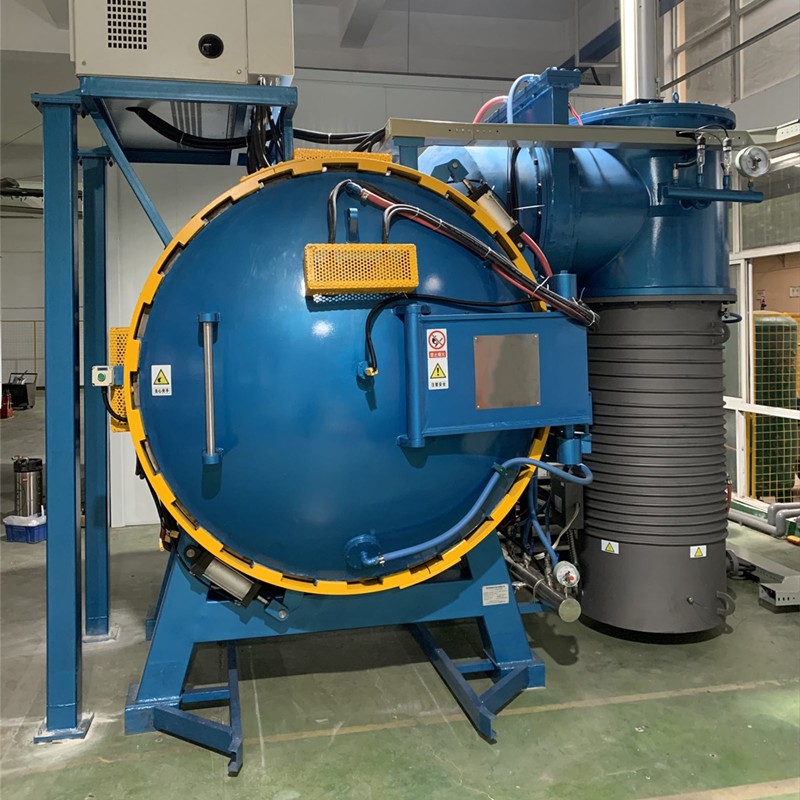
Vacuum brazing copper parts assembly process recommendations
Parts processing:
Machining tolerances are controlled at ±0.005mm to ensure consistent dimensions before assembly.
Use CNC lathe or grinder to process brazing surface to avoid manual error.
Pre-assembly:
Pre-fix the parts at room temperature using a fixture, and the gap is verified point by point with a plug ruler.
For complex structures (e.g. multi-layer copper tubes or radiators), use step-by-step assembly, fixing critical parts first.
Thermal Expansion Considerations:
Copper has a coefficient of thermal expansion of about 16.5 x 10-⁶/°C, and expands about 1.4% at 850°C. When assembling, reserve a small amount of expansion space (about 0.002mm) to avoid high temperature extrusion.
Assembly quality check:
After assembly, check the gap uniformity by ultrasonic testing or X-ray to ensure that there is no local oversize or undersize area.
Vacuum control:
The core advantage of vacuum brazing is to reduce oxidation, porosity and slagging defects through the high vacuum environment, so the control of vacuum is crucial to the quality of copper brazing.
Control points:
Vacuum range: 10-³ Pa to 10-⁵ Pa (i.e. high vacuum level) is usually required.
10-³ Pa: for general copper brazing, can effectively inhibit the generation of Cu₂O or CuO oxides.
10-⁵ Pa: applicable to oxygen-free copper (TU0, TU1) or high-purity demand scenarios, which can further reduce oxygen residue and avoid trace oxygen-induced discharge or contamination.
Vacuum monitoring: real-time monitoring using vacuum gauges (e.g. hot cathode ionisation gauge) to ensure stable vacuum.
Vacuum extraction time: Depending on the volume of the furnace chamber and the pumping capacity, it usually takes 10-30 minutes to extract the vacuum to the target value, avoiding too fast pumping which may lead to incomplete discharge of water or volatile impurities.
Influence analysis
Too low vacuum (>10-² Pa): Residual oxygen may react with the copper to form oxides, reducing joint strength and electrical conductivity.
Vacuum too high (<10-⁶ Pa): although the quality can be improved, the equipment requirements are high, the cost increases, and the revenue diminishes.
Copper characteristics considerations: oxygenated copper (such as T2) is more sensitive to vacuum, because of the high oxygen content; oxygen-free copper can be appropriately relaxed vacuum requirements, but still need to maintain a low oxygen environment to prevent hydrogen embrittlement.
Suggestion
Recommended vacuum level: 10-⁴ Pa, as a balance between cost-effectiveness and quality.
Dynamic adjustment: maintain a high vacuum (10-⁵ Pa) at the beginning of the warming process, and reduce it to 10-⁴ Pa at the holding stage of brazing to save energy.
Temperature rise rate control
The rate of warming directly affects the degree of softening of copper, the wettability of brazing material and the microstructure of the joint.
Control points
Warming rate range:
Slow warming: 2-5 ℃ / min, suitable for complex parts or thick-walled copper, to avoid thermal stress concentration.
Medium heating: 5-10 ℃ / min, general range, both efficiency and quality.
Rapid temperature rise: 10-20°C/min, suitable for thin-walled parts or scenarios requiring high production efficiency.
Segmented control:
Room temperature to 400°C: rapid temperature rise (10-15°C/min) to remove surface moisture and volatiles.
400°C to brazing temperature (680-850°C): medium or slow temperature rise (5-8°C/min) to ensure uniform melting and wetting of the brazing material.
Equipment support: The EP23 programmable temperature control furnace is used to ensure an accurate heat-up profile.
Impact analysis
Rising temperature too fast:
Advantages: Shorten process time and improve efficiency.
Disadvantage: It may lead to the copper grain growing too fast and softening seriously; the brazing material is not wetted evenly, and the air bubbles can not escape in time.
Heating up too slowly:
Advantages: uniform heat distribution, reduce stress, suitable for oxygen-free copper to avoid microscopic defects.
Disadvantages: Prolonged holding time, possible increase in energy consumption, excessive diffusion of elements in the brazing seam.
Copper characteristics considerations: rapid temperature rise tends to lead to loss of strength after cold work strengthening of pure copper; oxygen-free copper has a slightly higher tolerance to the rate of temperature rise.
Recommendations
Silver-copper eutectic brazing material (AgCu28): recommend 5-10°C/min to 850°C to avoid too rapid temperature rise resulting in an excessively thin eutectic layer.
Amorphous copper-phosphorus brazing material: 8-12°C/min up to 680°C is recommended to take advantage of its low melting point to improve efficiency.
Dynamic adjustment: fast heating for thin parts, slow heating for thick parts or complex structures.
Cooling gas selection: argon vs nitrogen
After vacuum brazing, the cooling phase often introduces inert gas to accelerate cooling and protection of joints, argon and nitrogen are common choices.
Control points
Gas purity: Requirements ≥ 99.99%, to avoid trace oxygen or moisture contamination.
Cooling rate:
Natural cooling: slow cooling under vacuum (about 1-3 ℃ / min), suitable for small quantities or low stress requirements.
Gas cooling: pass into argon or nitrogen, cooling rate up to 10-50℃/min.

